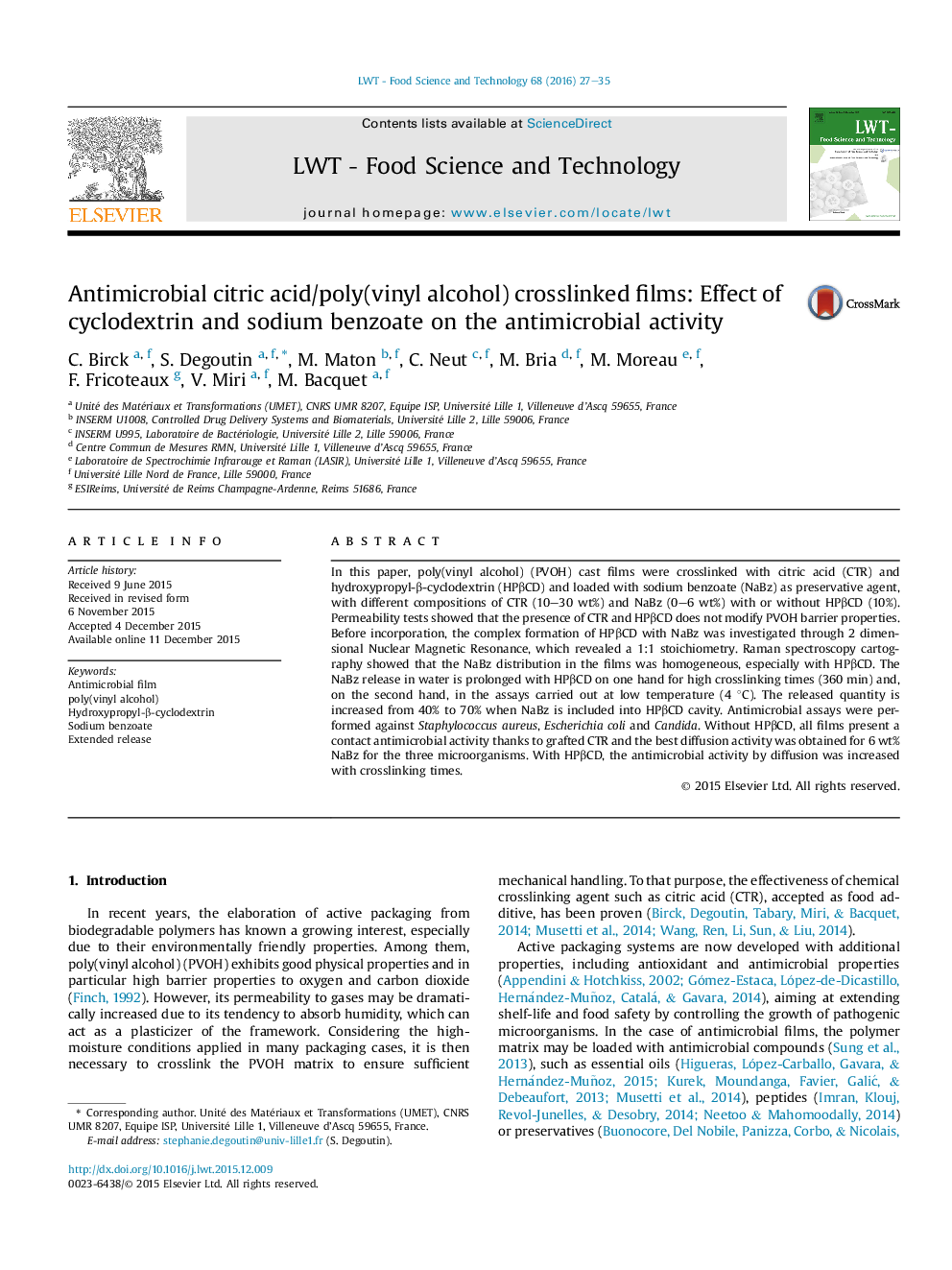| Article ID | Journal | Published Year | Pages | File Type |
|---|---|---|---|---|
| 4563615 | LWT - Food Science and Technology | 2016 | 9 Pages |
•Crosslinking of PVOH has no major effect on its intrinsic permeability properties.•Released quantity of NaBz is improved for films containing HPβCD.•Release kinetics of NaBz is slowed down with HPβCD at low temperature.•Antimicrobial activity is achieved by contact and diffusion of NabZ and CTR.
In this paper, poly(vinyl alcohol) (PVOH) cast films were crosslinked with citric acid (CTR) and hydroxypropyl-β-cyclodextrin (HPβCD) and loaded with sodium benzoate (NaBz) as preservative agent, with different compositions of CTR (10–30 wt%) and NaBz (0–6 wt%) with or without HPβCD (10%). Permeability tests showed that the presence of CTR and HPβCD does not modify PVOH barrier properties. Before incorporation, the complex formation of HPβCD with NaBz was investigated through 2 dimensional Nuclear Magnetic Resonance, which revealed a 1:1 stoichiometry. Raman spectroscopy cartography showed that the NaBz distribution in the films was homogeneous, especially with HPβCD. The NaBz release in water is prolonged with HPβCD on one hand for high crosslinking times (360 min) and, on the second hand, in the assays carried out at low temperature (4 °C). The released quantity is increased from 40% to 70% when NaBz is included into HPβCD cavity. Antimicrobial assays were performed against Staphylococcus aureus, Escherichia coli and Candida. Without HPβCD, all films present a contact antimicrobial activity thanks to grafted CTR and the best diffusion activity was obtained for 6 wt% NaBz for the three microorganisms. With HPβCD, the antimicrobial activity by diffusion was increased with crosslinking times.
